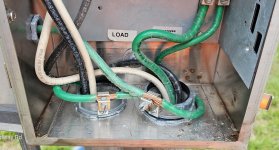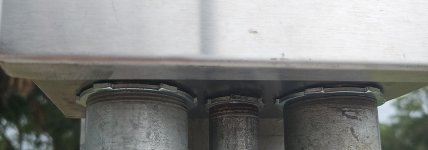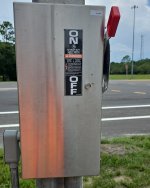Cjmccarthy
Member
- Location
- Florida
- Occupation
- Project Coordinator FDOT
Is this the correct way to install RGS conduits into a Disconnect or NEME box? I have never seen it done this way, the locking nuts are always on the inside and on the outside it has the gasket. I am trying to find the NEC code that talks about it.
as always, thank you guys for your help.
as always, thank you guys for your help.




